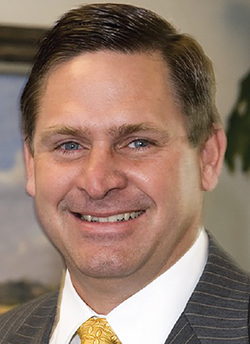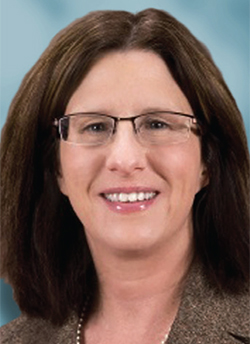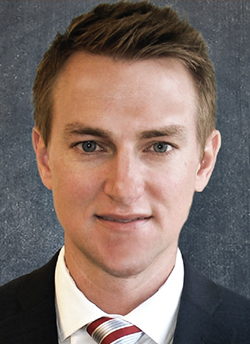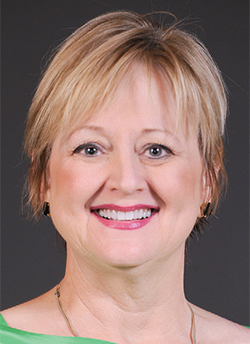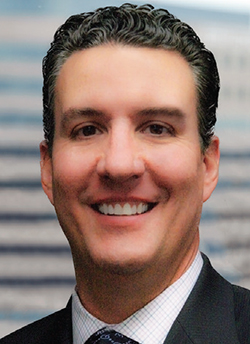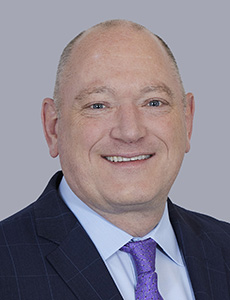2016 Power Broker
Public Sector
Beyond Expectations
John Burkholder, the director of risk management for Broward County, Fla., demands high standards, and is often disappointed by partners who doesn’t meet them. But that’s not the case with Arthur J. Gallagher’s Tony Abella, Jr.
Abella helped Burkholder become an insurance superhero. Over the past three years, Abella assisted Burkholder in saving tens of millions of dollars.
How’s that math possible? Broward County’s probable maximum loss was reduced by $178 million. It saved 36 percent overall on its property program.
For the county’s owner-controlled insurance program, the savings were more than $15.6 million. For a new terminal being built at the airport, Abella got taxpayers a 50 percent reduction on the builder’s risk coverage.
On the workers’ comp side, Abella and his AJG team turned a flat renewal into a nearly 20 percent reduction with a two-year guarantee, thanks in large part to how he marketed Burkholder’s award-winning risk management results.
Abella understands that especially for public entities, “every dollar counts,” as Steve Wells, president of the Alabama Municipal Insurance Corporation, put it. The mutual insurance company, which does $40 million in annual premium, saved seven figures in its renewals for property and liability, combined.
“He understands our business, maybe even better than me,” Wells said.
It’s Handled
Lidy Chan, the risk finance manager for the Massachusetts Department of Transportation, has worked with Ronni Rausch for nearly a decade. Their relationship has grown so solid that “she really never says no to us,” confessed Chan.
That’s the kind of service provider Rausch is. Responsive. Curious. Knowledgeable. Tireless.
Another client, the risk manager at a sizeable public entity, views her as more than an insurance broker — more like a trusted adviser.
“For each situation, Ronni listens carefully to what is needed and reviews related documents. Then as each situation merits, she may obtain an insurance policy, as well as recommend contract wording changes and add perspective to risk decisions,” the risk manager said.
Just in the past year, another public sector risk manager faced a liability claim that was blowing up. His entity had been managing it in their self-retention layer for years, but it turned ugly very fast. Years after the initial incident, they had to notify their excess carriers.
Given the late reporting, the carrier could fight it and did, but Rausch’s relationships in the underwriting community, her appreciation for policy language and her sound argument for coverage led to a favorable claim settlement for all.
This risk manager’s take on Rausch perhaps can best be summed up by something that Chan said: “I cannot brag enough about her.”
Saving Taxpayers Money
Justin Wiley spent his past year assisting public sector clients in tight spots. Take the city of Key West, Fla.
As risk manager Lisa Takach Borzy, described it, “Key West is literally the end of the road,” and figuratively, it’s a tough spot for insurance.
This past September, Wiley and his team had three days to put together a casualty program for Key West. They hit the deadline and managed to come in at the existing retention levels for less premium.
Wiley also built a new property program that saves Key West several hundred thousand dollars while providing more protection. The program includes flood solutions from international markets that cover exposed properties in the tens of millions in value.
For another public-sector client, Wiley helped it in a tight spot with cyber liabilities. The entity had an existing cyber insurance policy that had a seven-figure self-insured retention.
Wiley succeeded at renewal in transforming the coverage from SIR to deductible, while creating a process for claims to be responded to quickly and appropriately by an insurer.
“That really eased our minds tremendously,” the official said.
In this same period, Wiley assisted another client, Kent County, Mich., with efforts surrounding the move toward the independence of Gerald R. Ford Airport. The key was not to affect FAA approvals, while not impacting the county’s existing insurance program. Wiley did not let this problem fly away on him.
Truth to Power
Scott Anderson’s career in government finance spans 15 years. He’s come across all types of people from a spectrum of service disciplines. Jessica Govic left such a positive impression on him that he nominated her for a Power Broker® award.
Anderson, the finance director of the Village of Buffalo Grove, Ill., can rattle off the reasons: technical knowledge, communication skills, responsiveness, honesty, genuine concern for clients.
But it was seeing Govic in action that perhaps impressed him the most. The village has two pension funds, yet no fiduciary liability coverage for its trustees. The trustees and the annuitants of the funds have a relationship of trust. Yet risk respects no trust. Anderson called in Govic to explain the risks, as many times as it took for them to sink in.
“Let me protect you so you can continue to provide public service to the community,” she said to the trustees, according to Anderson. They were convinced.
It seems convincing public leaders of the reality of risk is her calling. Anderson first met Govic when she serviced the Intergovernmental Professional Benefits Cooperative (IPBC), a pool involving more than 70 municipalities across Illinois.
“Govic was asked to compete and present D&O and E&O coverage options to a group of government leaders who had, since inception of the cooperative, not believed that insurance was necessary,” Anderson said.
Cool in a Crisis
It was a busy year in the Bayou for Arthur J. Gallagher’s Nancy Sylvester. And a horrific one, given the theater shooting in July in Lafayette, La., which killed two people and injured nine others. Just months before the shooting, Sylvester assisted the Lafayette Consolidated Government in purchasing AJG’s Disaster Management Services Insurance product, which was then triggered by the mass shooting. The product provides coverage and deployment of trauma response and crisis communications management professionals.
“Nancy demonstrated the utmost level of kindness and concern for our community as she worked night and day in those early hours and served as our advocate. I am truly thankful for Nancy’s knowledge and genuine concern for our city,” said Joey Durel, Lafayette’s former mayor-president.
She also helped public servants tackle more mundane risks along the Gulf, like the billions in property exposure in Tier-1 CAT zones.
With Sylvester’s help, Louisiana’s risk manager Bud Thompson ended up saving $8.5 million in property premiums alone, while doubling limits, improving terms and conditions, and locking in multiyear pricing and capacity.
Another entity, a large college, was thankful to find itself buying insurance on its own for the first time since 1988. Sylvester moved the program from a deductible structure to high self-insured retention, while cutting the premium in half.
Strong Beginnings
Longevity can be an issue with startup insurance pools. Not every broker would know that pools need additional measures to ensure a sustainable financial future. Doug Wozniak does know.
For one client that was launching a new property and liability pool, Wozniak designed aggregate stop-loss protections and appropriate self-insured retention levels for all lines.
“It is because of that recommended structure we were able to confidently go to our marketplace and communicate that we are built to last,” the client reported.
How about startup captives? For that same client, Wozniak helped “radically” change its existing workers’ comp excess insurance program to deliver the most advantageous terms for the new workers’ compensation captive.
Or startup stock insurance companies? Wozniak worked with three insurance programs in Wisconsin to help create a brand-new property company to meet public-entity demand created by a crisis with the state’s Local Government Property Insurance Fund.
Wozniak helps established entities like Enduris, a risk-sharing pool with more than 500 members. The pool recently discovered a discrepancy in language regarding the pool’s property retention levels and member deductibles.
“Doug immediately corrected the error with an email memorializing the original intent, and now we are following up with contract language with the reinsurance provider,” Executive Director Mark Kammers said.

